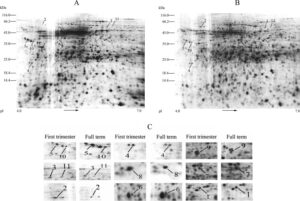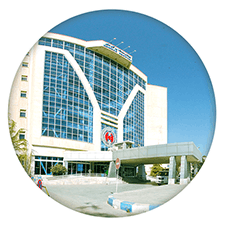Proteome differences in the first- and third-trimester human placentas
An article by DR. Jaleh Zolghadri – published in NCBI Website

Abstract:
Placenta is a transient and unique pregnancy tissue that supports the fetus nutritionally and metabolically. Expression of the unique placental proteins in different stages may influence the development of the fetus as well as the pregnancy outcome. The present study aimed to compare the total placental proteome differences between the normal first- and third-trimester human placentas. In the current study, placental proteome was compared between normal first- and third-trimester placentas using 2-dimensional polyacrylamide gel electrophoresis method for separation and matrix-assisted laser desorption/ionization time-of flight mass spectrometry technique for identification of the proteins. Despite the overall similarities, comparison of the mean intensity of the protein spots between the first- and third-trimester placental proteomes revealed that 22 spots were differentially expressed (P < .05) among which 11 distinct spots were successfully identified. Of the 11 differentially expressed proteins, 4 were increased (protein disulfide isomerase, tropomyosin 4 isoform 2, enolase 1, and 78-kDa glucose-regulated protein), while the remaining 7 (actin γ1 propeptide, heat shock protein gp96, α1-antitrypsin, EF-hand domain family member D1, tubulin α1, glutathione S-transferase, and vitamin D binding protein) showed decreased expression in the placentas from the first-trimester compared to the full-term ones. In summary, the results of the present study as the first research on the comparison of the first- and third-trimester human placental proteomes introduced a group of 11 proteins with altered expression. Interestingly, some of these proteins are reported to be altered in pregnancy-related disorders.
Keywords: first trimester; mass spectrometry; placenta; proteomics; third trimester.
You can read the full article at: https://pubmed.ncbi.nlm.nih.gov/25201741/
































